Open Space



Caring for Aotearoa’s special places




COVER IMAGE: Remuremu/half-star (Goodenia radicans), one of the endemic plants living at the inland saline site at
See pg 8 for story.
QUEEN ELIZABETH II NATIONAL TRUST is a statutory organisation independent from government and managed by a Board of Directors. We are a registered charitable entity under the Charities Act 2005. Registration number CC28488.
BOARD OF DIRECTORS Chair Alan Livingston, Karen Schumacher, Philip Hulme, Richard McDowell, Donna Field, Graham Mourie CHIEF EXECUTIVE Dan Coup T 04 472 6626 E dcoup@qeii.org.nz
VICE REGAL PATRON Her Excellency, The Right Honourable Dame Cindy Kiro, GNZM, QSO, Governor-General of New Zealand
OPEN SPACE™ is published by the Queen Elizabeth II National Trust, PO Box 3341, Wellington 6140, New Zealand. Level 4, 138 The Terrace, Wellington ISSN 1179-3880 (Print) ISSN 1179-3899 (Online) T 04 472 6626 E info@qeii.org.nz
Design Pogo Design www.pogodesign.co.nz
Editor Laura Dalby E editor@qeii.org.nz W www.qeiinationaltrust.org.nz

It is my pleasure to introduce issue 107 of our Open Space magazine. We really value the opportunity to highlight the incredible people and places involved in private land conservation.

The ecosystems protected by QEII open space covenants across the country are hugely varied and diverse, from dramatic open country such as the inland saline sites at Patearoa in Central Otago (page 8) to the many covenants supporting ecosystems with fascinating freshwater species (page 22).
Of the 5,246 registered QEII covenants, no two are the same. Each site protects land with high conservation values, supporting species that often rely on private land as a safe haven. We know that it is our duty at QEII National Trust to do everything we can to ensure these unique places are robustly protected well beyond our lifetimes.
In my foreword for issue 106 of Open Space in May, I introduced the funding challenges QEII National Trust currently faces. Our baseline funding from the government has still not increased since 2015. We are pursuing avenues to increase this, but it is challenging at a time of financial austerity.
The QEII board and I have become increasingly confronted by the prospect of how we might operate going forward if we continue on our current funding trajectory. Like many in the conservation sector, we are facing some challenges. However, we want to be clear that we will steadfastly hold to our standard of care for existing covenants.
During these trying times, I am heartened by the dedication of landowners doing amazing things and going to great lengths to enhance
their covenants (page 34), and we are pleased to help covenantors connect to councils and other funders to complete covenant enhancement projects wherever we can (page 14).
Participating with other organisations in research is vital in the current conservation landscape and we were glad to partner with Manaaki Whenua – Landcare Research to tell the story of how lowland forest remnants in Te Tairāwhiti have fared in the time since the severe weather events of early 2023 (page 18).
Our people, past and present, are integral to QEII’s trusted model that prioritises relationships as the way forward in conservation. We look to the legacy of the late James Guild (page 30), who was an instrumental leader at QEII as a previous Chair and a dedicated covenantor, always attentive to where agriculture and conservation could meet.
The uniqueness of each place under the protection of a QEII covenant is as precious as the uniqueness of the people involved in protecting them. We – QEII National Trust and the landowners we work alongside – occupy a unique position in the wider landscape of conservation in Aotearoa New Zealand. If we support each other, I truly believe these special places will stand the test of time to be enjoyed by the next generations.
Alan Livingston Chair

The envelope Open Space is delivered in gives us the opportunity to highlight one of your special protected places.
The photo featured on the envelope for this edition shows Mangawawe Stream flowing through Marilyn and Robin’s covenant on Mt Pirongia.
Since purchasing their property two years ago, Marilyn and Robin have been working hard on pest animal and plant control. Taking out the blackberry has finally opened up access to parts of the stream that were previously inaccessible. The couple find the Mangawawe Stream a peaceful spot and are encouraged to see the regeneration of the lowland forest unfolding around them, with the covenant starting to transition to rimu and kahikatea canopy in places.
The couple are also retiring the steep adjacent slopes back into native bush as well as replanting the areas within the covenant that have been cleared of blackberry. With the help of Trees That Count, they have so far planted over 7,000 trees.
If you have a photo of your covenant that you would like to feature on a future envelope for Open Space, please send a copy of the photo with a short description to editor@qeii.org.nz.
Digital subscriptions for Open Space
Read the latest issue of Open Space whenever and wherever you want with our digital subscription option.
Readers with a digital subscription will get email access to read the magazine online as soon as it is published. Back issues of Open Space can also be accessed on our website.
To switch to a digital subscription, complete the digital subscription form on our website: bit.ly/qeiidigitalsubs
You can opt in or out of a digital subscription at any time. If you want to go back to getting a physical copy of Open Space, let us know online through our ‘contact us’ form or send us an email.
If you have any questions about the digital subscription or any other feedback about Open Space, email us at editor@ qeii.org.nz.
For the team at QEII, it is a delight to produce our Open Space magazine for our audience, and we are thrilled to hear back from our readers in return. We wanted to share a letter from George Gibbs in response to our article ‘When we leave the lights on’.
Dr Gibbs is a retired entomologist, university lecturer and author of the award-winning Ghosts of Gondwana: The History of Life in New Zealand, which explores Aotearoa’s extraordinary natural history.
Want to write in?
You are welcome to get in touch with us with feedback, responses or enquiries about our Open Space magazine.
Email us at editor@qeii.org.nz

What do we mean by the use of the word ‘ancient’ in relation to our concept of evolutionary history?
The New Zealand moth fauna is well-known for its rich representation of primitive moths. These are referred to as the ‘jaw-moths’ of the moth world – the ones that are characterised by having rigid jaws to grind up pollen instead of a long tongue to access flowers as a source of nectar.
I am a retired entomologist, fortunate enough to be living on the margin of a patch of mature beech forest, protected by a QEII covenant in Eastbourne, situated on the eastern shores of Te Whanganui-a-Tara. I was particularly moved by your outstanding article ‘When we leave the lights on’ printed in Open Space issue 106 and drawing attention to a gallery of exquisite photos of some of our more southern moths. Lovely photos!
We are aware that not all moths are equally ancient. Modern genetic studies tell us that some have clearly evolved more recently than others. An outstanding, but virtually unknown, New Zealand example is referred to as the ‘kāmahi scribbler’ - a tiny moth no more than 10 mm long, that I want to introduce to you. Very few New Zealanders know of its existence, let alone its puzzling role in the evolution of our moths! I consider myself incredibly fortunate to be able to say that it happens to live in our QEII covenant.
Of the 2,000+ kinds of moths found in New Zealand, the evidence suggests that this one appears to belong to a group of Lepidoptera that could be unique to the islands that make up Aotearoa. That means that no moth matching this one has been found anywhere else on the planet, thus opening up a potential research study, using DNA genomics, to seek out a sister-group elsewhere on earth.
The story, which begins in 1990, was unravelled when entomologist John Dugdale, commonly referred to as the godfather
of New Zealand entomology, began following up a trail of bark scribblings that he had discovered on young kāmahi trees throughout New Zealand from Puketī kauri forest in Northland to the kāmahi forests of Hokitika in the south.
Finally, in 2003, after a collaborative effort, a formal scientific name was bestowed upon this species by Robert Hoare and John Dugdale. They named it Xanadoses nielseni, or the ‘kāmahi scribbler’ (the species name refers to the discoverer, Ebbe Nielsen, a Danish lepidopterist who was working in Australia at the time).
A sister-group for Xanadoses has not been found anywhere in the world. Robert Hoare (of the NZ Arthropod Collection) says, “it is of a very ancient lineage, wherever it belongs” – meaning that we have an Aotearoan moth right here, thought to be ancient, with no known relative elsewhere on the earth!
In the course of moth collecting around our covenant, I have discovered, with a great deal of surprise and much excitement, that it lives right here, in my own backyard.
This photo of the kāmahi scribbler drinking from a droplet of water on a leaf, sums up its primitive features very well. This moth has no more than a vestige of a tongue, nor does it have jaws, thus placing it midway between the primitive moths (with jaws) and the vast majority of moths (with long tongues). Hence in order to drink, it must ‘kneel-down’ and plunge its mouth into the liquid. The cute orange hair tuft between the eyes is diagnostic!
Back to the Gibbs covenant…it occurs to me that in the chronicles of historical biogeography, this is almost equivalent to coming across a moa in my backyard!
- Dr George Gibbs, Eastbourne, Wellington
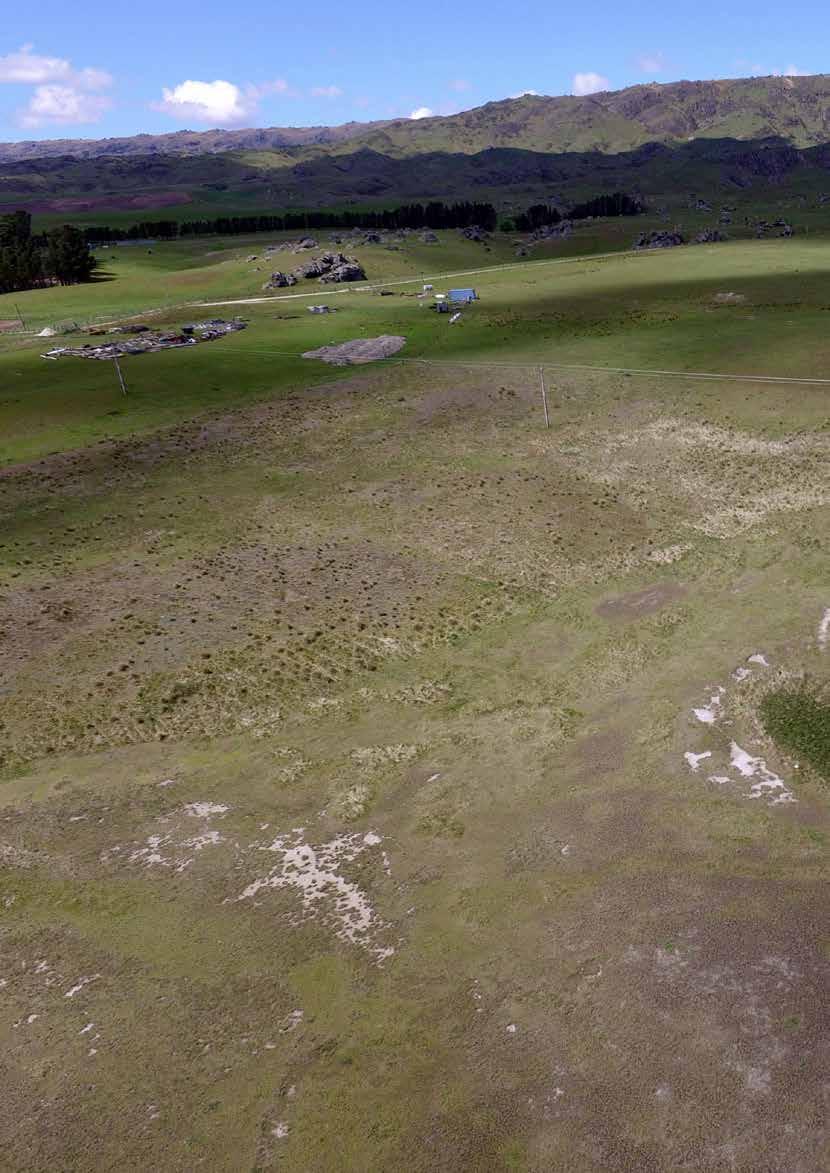
Our thanks for the research, contribution and words of Aalbert Rebergen, Dave Craw, Cathy Rufaut, Dhana Pillai, Steve Read, Rob Wardle, landowners Charlie Hore and Belinda Colling and previous landowner John Beattie.
Patearoa, Central Otago
At a distance, the Patearoa inland saline site protected by a QEII covenant looks like many of the other landscapes in Central Otago – dry, rugged hills and wide expanses of light ochre grasslands.
But up close, and below the surface, a very unique ecosystem is at play, all dependent on the specific salinity (salt levels) of the ground beneath.
“When people think of environments protected by QEII covenants, they might first think of wetlands and forest remnants,” says Rob Wardle, QEII regional representative for Central Otago. “But the Patearoa covenant is something a little bit different from what usually comes to mind.”
At only 4.5 hectares, the small covenant at Patearoa protects what is called an ‘inland saline’ environment or ‘salt pan’, which is home to some extremely unique flora and fauna.
Jobs for Nature funding via the Department of Conservation has opened up exciting research at the Patearoa covenant as part of QEII’s Eastern South Island Rare and Threatened Species programme, overseen by Aalbert Rebergen. This funding has enabled researchers to survey covenants that have especially rare biodiversity values and paved the way for improving management of the sites.
Professor Dave Craw from the Geology Department at the University of Otago has been involved in research centred on the Patearoa site.
Dave explains that salt pans like the ones at Patearoa are formed from

small amounts of dissolved sea-salt delivered to the inland environment in rain and wind from the coast. Salts are left behind when rain and shallow water runoff evaporate during Central Otago’s well-known high summer temperatures.
The salt pan forms because of a combination of factors. The presence of clay underground, the bare soil-free surface that is constantly eroding via wind and water, and the dry, highly evaporative climate all contribute to the buildup of salt on top of the bare ground and in shallow ground waters.
“The most common salt mineral [at the site] is sodium chloride, the same as table salt,” says Dave. “In addition, some of the rainwater interacts with the schist bedrock, and dissolves even more chemicals, especially more sodium. This excess sodium combines with carbon dioxide from the atmosphere to make sodium carbonate minerals, similar to washing soda used in some laundry powders. This can make the surfaces highly alkaline, with pH as high as 11 – that is 10,000 times more alkaline than drinking water.”
There are other salt pan areas in the general Maniototo area, but they are geologically different and are affected more strongly by surrounding agriculture, especially irrigation. It is possible that the Patearoa site may be the last example in the Maniototo
of this type of landscape and its flora, with associated invertebrates. Native bees seem to love the bare ground of the pans, seemingly not put off by a salty interior to their burrows.
Most plants would dislike living in such a harshly saline-alkaline environment, but there are several species endemic to New Zealand that have adapted to grow and thrive in saline environments, called halophytes (halo meaning “salt” and phyte meaning “a plant growing in a specific way or place”).
These salt-tolerant species can also grow along the coastline, but their habitats have been decreasing and many of these halophytes are now classified as rare or endangered. The salt grass species Puccinellia raroflorens – a tiny, often sandcovered grass – may now be limited to only inland sites such as at Patearoa.
Some exotic weed species such as buck’s horn plantain (Plantago coronopus) are also salt and drought tolerant, and can displace the endemic plants, encroaching on their habitat and changing the chemistry of the earth beneath. As the weed grows it creates an organic layer of ‘soil’ on the surface of the clay salt pan, which has a lower salinity. Over time this surface layer builds a foothold for exotic pasture grasses to become established, creating even more lowsalt surface ‘soil’. As a result, the salt pans are shrinking steadily.
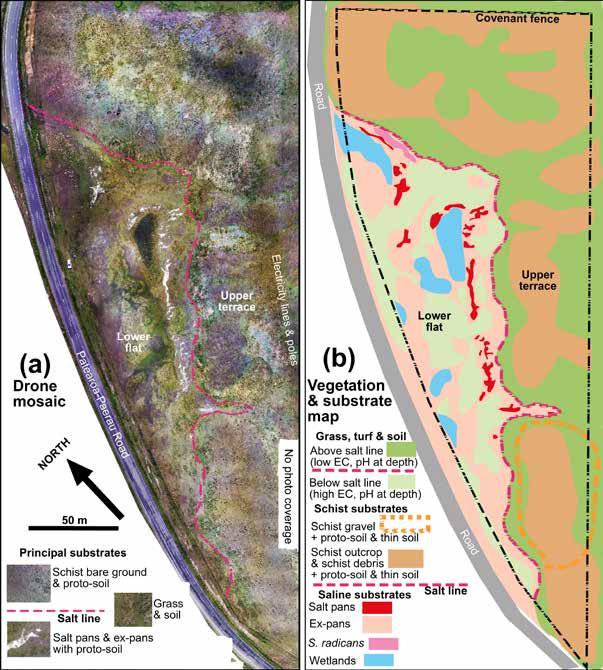

ABOVE:
Researchers from the University of Otago created a photo mosaic from drone images to show the salt line and layout of vegetation and substrates. Provided: Dr Dave Craw
LEFT:
Sketch of cross section through the terrace scarp at Patearoa. Provided: Dr Dave Craw
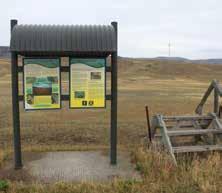
Protecting something a bit different
John Beattie, who first protected the Patearoa site with a QEII covenant, has a longstanding interest and fondness for the salt pans. John’s grandfather bought Patearoa Station in 1910 and the property remained in the family for over a hundred years. As a child, he remembers Otago University students camping near the salt pans during Labour Weekend to study the flora and fauna of the site.
“We were told lots of different stories from the experts, including that it had been an inland sea, but then that idea was quashed, and it turned out the salt was from the soil,” says John. “There was always interest from the scientists.”
In the mid-nineties, Brian Molloy, the QEII regional representative at the time, approached John about protecting the Patearoa site with a QEII open space covenant.
“[Brian] was quite a well-known scientist in the region, in the highcountry scene,” says John. “He was the first person who came to talk to me about where the [covenant] site was planned to be.”
Fast-forward to the present day, and QEII rep Rob Wardle works with current owners Charlie Hore and Belinda Colling to continue the management of the area. Cattle have been excluded and a low level of sheep grazing retained to achieve some control of exotic grasses and herbs, which outcompete natives.

During their study of the site, researchers found a ‘salt line’ at Patearoa – a separation between the plant species due to the geology underneath. Above the salt line, the environment is more favourable for non-saline species, such as Maniototo peppercress (Lepidium solandri) and some native broom (Carmichaelia spp). The endemic salt-tolerant plants or halophytes are only found below the salt line, like Buchanan’s orache (Atriplex buchananii).
“The salt line arises because of the underlying geological structure, with impermeable clay-rich rock below the salt line and rubbly permeable debris above the salt line,” says Dave Craw. Researchers documented the plant species above and below the salt line revealing that there is very little overlap between the salt-tolerant and nonsaline plant species.
Below the salt line, Dave Craw and the research team noticed that shallow excavation or ‘scraping’ of weedy areas revealed that saline rock remained below the surface, underneath the primitive soil created by the weeds. They decided to do a pilot study of this scraping method to see if the endemic salt-tolerant species would grow back on the bare salt pan surface once the weedy soil had been scraped away.
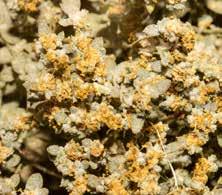
“We removed the ‘soil’ from the area in late 2022, to re-expose the soil-free bare ground again,” says Dave. “At the same site in April 2024, we saw rampant colonisation by one of the endemic salt-tolerant species, Buchanan’s orache (A. buchananii). Encouragingly, the weeds have not yet returned to any significance in the scraped trial areas.”
This pilot study gives a small glimpse of what can be achieved with future management of this site. “One of our new scraped areas was developed where the spring-annual Myosurus minimus was last seen at the site 20 years ago,” says Dave. “We are hoping for return of that from a seedbank below the Buck’s horn plantain (P. coronopus) weed cover.”
The harsh, saline environment at Patearoa might not seem like an obvious safe haven, but for some of our most rare and endangered salt-tolerant plant species, Patearoa could be the lifeline they need to stave off extinction. Perhaps one day the unassuming shoots of the New Zealand mousetail (Myosurus minimus) will emerge for the Central Otago spring.
ABOVE FROM LEFT
Entrance to the covenant. The public are free to wander the area on foot. Photo credit: Rob Wardle
Maniototo peppercress (Lepidium solandrai) Threatened Nationally Critical growing on terrace above salt line. Photo credit: Rob Wardle Buchanan’s orache (Atriplex buchananii) known to grow below the salt line at Patearoa. Photo credit: Carey Knox
like it salty

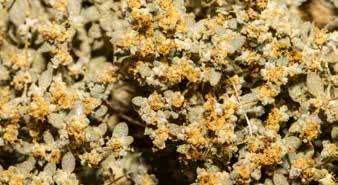
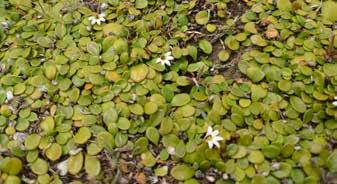

raroflorens)
Outside of Central Otago, this species was last seen on Stewart Island around the 1980s. Unlike the other saltgrass species on inland salt pans, it has a tiny flower that is so short it doesn’t get above the leaves. It prefers to occupy low points at Patearoa, where surface water accumulates, rather than uphill near the salt line boundary. The grass forms distinctive mats which are sometimes interspersed with other halophytes.
Buchanan’s orache (Atriplex buchananii) –
In Otago, this species is now considered more common inland than on the coast, where it is one of the most commonly encountered halophytes on salt pans. Flowering time at Patearoa forms a low meadow of lemon-yellow flowers held above the ground-hugging leaves. They must be like flags to passing insects looking for nectar and pollen. Although diminutive above ground, this species has an incredibly extensive root network, made up of deeper taps and roaming laterals. Unlike the saltgrass, which it commonly grows alongside, this orache or ‘salt bush’ occurs on drier ground up around the salt line at Patearoa.
Remuremu, half-star (Goodenia radicans) –Not Threatened
This prostrate small herb forms mats on the Otago east coast, usually above the high tide line but well within spring tide and salt spray range. With white, half-frilled flowers, it occurs in a single place in the Patearoa covenant, near the lowest point where a wetland forms in winter and spring.
This endemic moth was re-discovered at this site in 1987 having not been recorded for 45 years. Paranotoreas fulva is a day flying moth found in the southern half of the South Island, preferring the salt pans of Otago and the grasslands in South Canterbury and Otago. Their larvae feed on Buchanan’s orache (A. buchananii) and buck’s horn plantain (P. coronopus). They have been known to sunbathe on the bare salt pans.
BEFORE
Small area of salt pan covered with P. coronopus weeds, before ‘soil’ layer was removed as part of the ‘scraping’ pilot study in 2022.


AFTER ‘Scraping’ pilot study at Patearoa site with rampant colonisation by one of the endemic salt-tolerant species, Atriplex
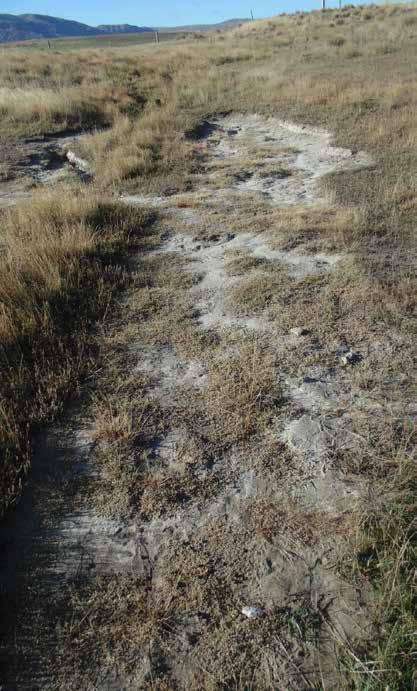

Funding can make a huge difference to landowners with QEII covenants. Every bit of help counts with projects in covenants, from weed control, pest control, planting or covenant infrastructure.

Funding for projects in QEII covenants
While not every region will have funding available, help might be out there for projects in QEII covenants.
Our annual contestable fund, The Stephenson Fund, is open to applicants from across the country every year, from July to August.
If your covenant is in the Auckland region, you can apply to the Auckland Council Fund at any time of the year and applications will be assessed on a rolling basis. Find out more on the Auckland Council Fund page on our website: qeiinationaltrust.org.nz/managing-yourcovenant/the-auckland-council-fund/
Other councils and organisations may also have funding available for projects on QEII covenants. Ask your QEII regional representative about what funding might be available in your area. Visit our ‘Find your rep’ page on our website: qeiinationaltrust.org.nz/find-your-rep/
RIGHT

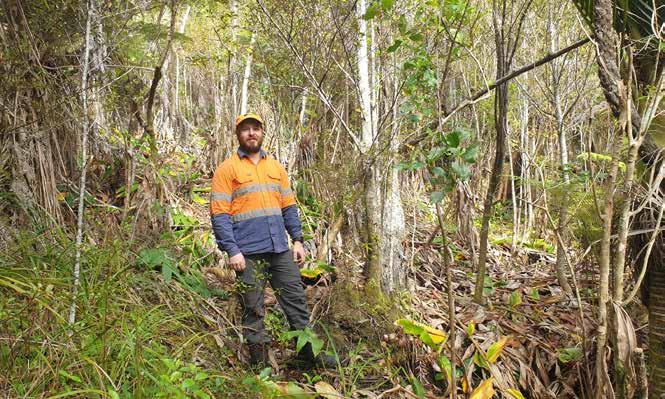
Once too discouraged to enter the QEII covenant on their property south of Warkworth since purchasing it in 2022, Carolyn Workman was “blown away” by the difference some help with weed control can make.
Carolyn moved to Mahurangi West after 32 years living in Auckland City. A member of Yosemite Conservancy since 1976 and a volunteer with the Conservancy at Yosemite National Park for the past 10 years, she was keen to purchase the property with a QEII covenant and be a steward in her own backyard. However, after her first year of weed control with the support of two local students, Carolyn found the problem was way bigger than she realised. While initially feeling defeated, Carolyn and her QEII rep agreed that a strategically planned approach was the only way forward.
The covenant was registered in 1981, protecting lowland regenerating forest featuring kānuka, pūriri and māhoe. Over the years, pest plant species had increased to the point where they threatened the forest’s regeneration, with wild ginger, climbing asparagus and monkey apple becoming the most abundant.
Thanks to funding support from the Auckland Council Fund, QEII regional rep Chris Floyd and Carolyn agreed on a three-year plan to tackle the problem with help from local contractors. “If we could get the covenant to an ecologically sustainable state where the
existing native plants will be dominant, it would make routine weed control maintenance achievable,” says Chris.
The contractors set to work and removed all mature fruiting pest plants, sprayed ground weeds, and applied cut and paste to woody weed saplings – this has already made a staggering difference. Upcoming work for the project’s second year will target the removal of younger pest plants and follow up with a second round of spraying. The work undertaken not only benefits this covenant but contributes to work undertaken by the wider community, including volunteers from the Mahurangi West Pest group. The property is also on the edge of a pest plant buffer area around Auckland Council’s Regional Parks.
Carolyn joined Chris in the covenant to see what had been achieved by the contractors in the first year of work and Chris said she “came out with a smile on her face”.
“It was a huge encouragement to walk the length of the covenant for the very first time, top to bottom, and see first-hand the progress made in a dense pest tree and plant habitation that I was too discouraged to view a year ago because I was so overwhelmed by the scale of the problems,” says Carolyn.
The landowner is committed to ensuring the site continues to be maintained once the project ends, to prevent weed species from overrunning the site again.
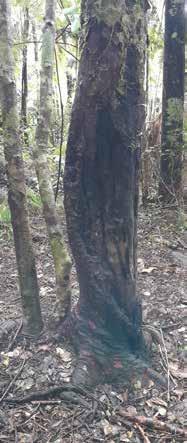
An example of damage pigs can cause to trunks and roots of our kauri, mataī, miro, tānekaha, rimu and other trees with high levels of resin and tannins (phenolic acids). The pigs will scar the trunk and roots with their tusks and hooves eating the bark and rubbing/ scratching on the exposed core of the tree, and they will continue to come back to the same trees until they eventually kill them. Photo credit: Kelly Petersen
Contractor Ben Yorke inspects a kauri tree for visible signs of kauri dieback disease, caused by the soil-borne pathogen Phytophthora agathidicida, Waipu, Northland. Photo credit: Kieran Pullman
Kauri are a taonga (treasure) in Aotearoa New Zealand. They are one of the longest-living trees in the world, some reaching 1,000-2,000 years old. Kauri forests are naturally found throughout the upper North Island and are unique, often forming dense stands.
Kauri are threatened by a pathogen called Phytophthora agathidicida (PA for short) which infects kauri through their roots, causing the fatal condition known as kauri dieback disease. The PA pathogen is carried in the soil and can be spread by even a single speck of soil.
In June 2022, $425,000 of funding from the Ministry for Primary Industries (MPI) via the Tiakina Kauri Programme was secured to support on-the-ground projects in QEII covenants, with a focus on the protection of kauri, giving this ancient tree space to grow.
Part of the aim of the Tiakina Kauri Programme was to invest in kauri protection activities, and the programme supported 34 QEII projects in five regions: Far North, Kaipara, Whangārei, Coromandel and Waikato. The projects funded included fencing works, controlling goats and pigs, monitoring, track work and controlling weeds.
Some of us might be familiar with boot-washing stations and boardwalks that are designed to reduce the risk of people unintentionally spreading the PA pathogen. PA can be spread by footwear and equipment that touches the soil, but many might not be aware that pigs and goats can also spread the pathogen if they have walked through infected areas.
Pigs and goats can often roam quite widely, trampling and spreading soil in their wake, which can bring the pathogen into direct contact with kauri roots.
Dean Baigent-Mercer, one of the landowners involved in work funded by Tiakina Kauri, suspects the pathogen is getting closer to local covenants in Ōtangaroa, mostly moved by wild pigs. “Hunting pigs using dogs had been effective at knocking down pig numbers in the past, but dogs tend to scatter pigs. We wanted to knock down pigs of all ages and sex as soon as they arrive,” Dean says.
“The Tiakina Kauri funding has enabled our pig trapper to use an innovative mix of motiontriggered cameras to let us know of pig reinvasion. AutoTraps (AT-220s) placed above a pig trap drop dead possums and rats into large cage traps to act as initial bait to attract pigs. Then fermented maize is used as bait and pigs are trapped in groups,” says Dean.
Between three QEII adjoining covenants that include Dean’s covenant, approximately 39 pigs have been caught and killed in 10 months. Dean can already see the visible benefits to the forest as a whole.
“The pigs aren’t hoovering up so many seeds and scoffing seedlings. It’s a win-win and we are so grateful to our great trapper and his ongoing innovation and adaptations to keep the pig numbers down. Of course, this relies on ongoing funding, which is the only way we are going to keep areas safe from [the pathogen that kills kauri].”
In Julia Walker’s covenant, the same pig trapper, Kelly Petersen from Petersen Trapping, has removed 137 pigs in seven months using a network of traps and cameras.
“Wetlands that looked as if they’d been rotary hoed are flourishing once more and the bush is getting a nice layer of leaflitter and a happier understorey again. Ground nesting birds like grey duck, bittern, rail and pūkeko have a chance to nest here this year,” says Julia.
“Everyone has had to get used to the stench of rotten maize. Once you realise what a good job it does as a lure, you can almost become enamoured of it, like the ‘nose’ of a really good silage or stinky cheese.”
Some projects in covenants funded by the Tiakina Kauri Programme focused on monitoring to get a better understanding of the health of the kauri forests and whether they were at risk of disease.
The funding allowed QEII to contract BioSense, an Auckland-based team of scientists and biosecurity specialists. QEII regional representatives in Northland worked with BioSense to identify appropriate high-value covenant sites for monitoring/surveillance of kauri health.
“It was an exciting opportunity to work with QEII and landowners who are already putting so much effort in to protecting the environment,” says Lee Hill, managing director at BioSense.
“Kauri are a keystone species of great cultural and ecological importance, and this project provided a valuable chance to come together as a team and community to try to help protect kauri from the threat of [the PA pathogen].”
From the surveillance findings, BioSense worked with QEII to develop individual site-specific reports for each landowner on
the health of their kauri and management actions landowners can implement. Lee from BioSense sees the project as having long-term positive impacts on kauri and the health of these forests. “This project with QEII and the landowners will make a big impact on helping protect the future of kauri.”
QEII and the landowners involved in these projects are extremely grateful to MPI and the support through the Tiakina Kauri programme for the funding to undertake these actions to protect and care for kauri on private land.

BELOW
Soil samples are collected from eight points around each selected tree then incubated in the laboratory to test for Phytophthora agathidicida, Waipu, Northland. Photo credit: Kieran Pullman
Kauri, Agathis australis roots with visible mycorrhizal nodules, Waipu, Northland. Photo credit: Kieran Pullman
Lone boar


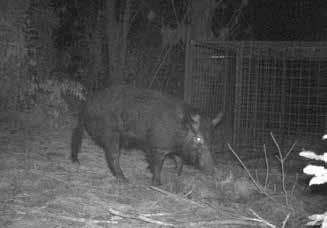


A year and a half ago, Cyclone Gabrielle swept through the North Island, impacting many covenantors and their QEII-protected land. While many blocks are now showing signs of bouncing back, it has become apparent that some lowland podocarp forest remnants have been seriously affected.
Manaaki Whenua – Landcare Research is studying some of these remnants to assess impacts and recovery after extreme weather events.
Our thanks to Manaaki Whenua – Landcare Research for contributing this article to our Open Space magazine.
Cyclone Gabrielle brought widespread destruction to the North Island of New Zealand in February 2023. Over 500 mm of rain fell in some areas, and the severe flooding deposited vast quantities of eroded sediment on the floodplains of Te Tairāwhiti/Gisborne, where the few remaining lowland forest fragments are of high conservation value. In some forest remnants, flood debris was found almost four metres above the ground and sediment was over 50 cm deep, causing dieback of small shrubs and vines through to mature canopy trees.
Extreme weather events have been agents of disturbance in North Island lowland forests for millennia, such that many of their plant species could be considered ‘flood-adapted’, like the towering kahikatea (Dacrycarpus dacrydioides), sub-tropical pukatea (Laurelia novae-zelandiae), and the nationally vulnerable heart-leaved kōhūhū (Pittosporum obcordatum).
However, the natural process of forest regeneration that usually follows these disturbance events now faces more recent pressures, such as increased sediment deposition (a result of historical clearance of indigenous forest for pasture and plantation forest), browsing by stock and feral ungulates, and invasion by exotic weeds.
Without management to mitigate these pressures, regeneration may be disrupted or stalled entirely, meaning that we are in danger of losing the few lowland forest fragments that remain in Te Tairāwhiti/Gisborne.
QEII covenants play a critical role in protecting these forests on private land. However, they now also play a role in research that aims to understand the impacts of disturbances on these existing forests
and examine potential management strategies that could support their regeneration and recovery after extreme weather events such as Cyclone Gabrielle.
To achieve this, researchers at Manaaki Whenua – Landcare Research (MWLR) selected forest sites with local ecologists and kaitiaki, including Malcolm Rutherford (QEII National Trust), Don McLean (Gisborne District Council), Damian Whaanga (Rongowhakaata), Mere Tamanui (Te Aitanga Hauiti), and Margaret Ngārimu and Jade Gibson (Whareponga).
Manaaki Whenua – Landcare Research plant community ecologist Dr Warwick Allen led the field campaign with five others from MWLR alongside mana whenua and other stakeholders.
“We set up and measured 41 permanent monitoring plots in 19 forest fragments, including six QEII covenants” Dr Allen says. “Access to these covenants was facilitated by QEII regional representative Malcolm Rutherford, who joined us for a couple of days in the field, along with some covenantors like Bridget and Mike Parker at Broadlands.”
In each plot, the team measured cyclone damage (e.g. sediment depth, flood height, and tree survival), characterised the plant community (e.g. plant species identity and percent cover), and quantified potential for forest regeneration (e.g. seed bank composition, seedling and sapling counts, browsing mammal sign).
“It was confronting to see how the cyclone had affected some of the forest fragments. In those with deep sediment deposition, many trees had died or were severely stressed, resulting in a forest devoid of colour and character,” says Dr Allen.
Te Tairāwhiti /Gisborne
Bridget and Mike Parker, landowners who joined the MWLR field team at their QEII covenant Broadlands Forest, said that the cyclone left their forest block bogged down in sediment, and that some of the trees are dying. “The saddest part has been seeing the effect on the forest. There are weeds such as pampas grass invading and the sediment is quite deep, suffocating the trees. A lot of unpaid time and effort has gone into the forest, it’s heartbreaking,” says Mr Parker. “However, Gisborne District Council has been very helpful with pest control over the last 20 years, and we hope that ongoing pest control will help with the forest’s recovery.”
At some sites, including Broadlands, Dr Allen says he was left feeling hopeful by the presence of a diverse and healthy understory with various size classes of seedlings and saplings, suggesting that regeneration is possible with appropriate management.
Dr Allen and his team will publish a full report of the findings later this year. They also plan to return to these sites within 5-10 years to assess long-term cyclone impacts and post-cyclone recovery and regeneration. Please email us if you’re keen to find out more: spraguero@landcareresearch.co.nz
We are grateful to the QEII landowners for access to their forests and their support of this research: Dan and Tam Jex-Blake, Leanne Milligan, Helen and Ian Burgess, Nick and Kit Broad, Bridget and Mike Parker.


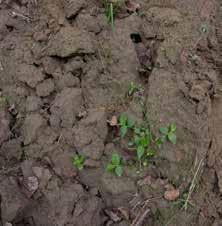
FROM TOP
Paul Robbins and Warwick Allen (Manaaki Whenua – Landcare Research) surveying a forest fragment near Gisborne. Photo credit: Brennan Thomas, Strike Photography
Remnant kahikatea (Dacrycarpus dacrydioides) forest beside the Hangaroa River, Tairāwhiti, that was severely flooded during Cyclone Gabrielle and showing signs of dieback. This photo was taken on 6 November 2023 and all pictured trees are now dead. Photo credit: Malcolm Rutherford Plant pests such as this Tradescantia tend to thrive following a disturbance event.
Photo credit: Malcolm Rutherford
What can I do to manage my covenant after a severe weather event like Cyclone Gabrielle?
When your house has been flooded and your farming operation has been turned upside down by extreme weather events, the long-term management of your covenant is probably not your highest priority. Despite that, people have gone to great lengths to keep stock out of these precious covenants.
A good first step would be to check fences are intact to keep stock and feral ungulates out of the forest to prevent them from munching and trampling native seedlings. A temporary fix could be with netting and waratahs or a few electric wires and a solar electric energiser.
Floodwaters can also move a whole lot of weed seeds and vegetative material, which tend to thrive after a disturbance event. Some of the worst offenders are Tradescantia fluminensis, Japanese honeysuckle (Lonicera japonica), hawthorn (Crataegus monogyna), and privet (Ligustrum species). In this circumstance, additional weed control could be required to keep the covenant in good condition.
Finally, dead trees and wood should not be felled or removed, as they provide important shelter for regeneration as well as habitat for fungi and animals.
From ngā maunga to te moana (the mountains to the sea), fresh water creates opportunities for life to flourish. Whether it be a swiftly flowing river, a deep, still lake, a soggy wetland or a damp patch in a paddock, watery zones have the potential to become safe spaces for amazing creatures. The need for healthy water connects all forms of life on earth - some we may be familiar with (like eels, perhaps…and people)! But have you ever been face to face with a Gollum fish? Or seen the luminescent light of a glow-in-the-dark freshwater snail limpet? From common bullies (of the fishy kind) and mud snails, to star-bellied travelers, let’s take a look at some of the curious creatures who may be living in a waterway near you.
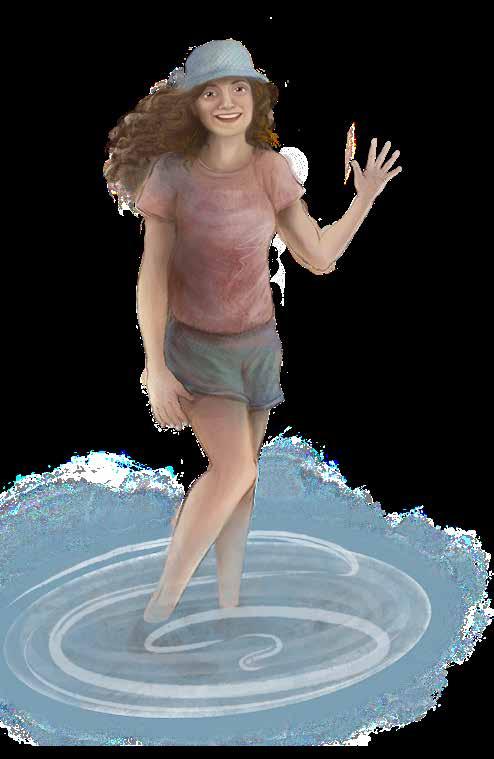
Our friend Jess, a curious creature herself, will introduce us to some of the wondrous wildlife she has encountered during her adventures with te wai.
What got you interested in freshwater ecology?
I’ve always loved exploring streams and rockpools, looking under rocks and trying to spot the critters that live there. One of my favourite things to do was to head out to a local stream at night with a torch and look at the native fish that come out to explore. This is a fun activity you can also do with an adult. Be patient and try not to spook the fish with the torch as you approach the stream. If you’re heading out during the daytime, you can turn over different rocks and you’ll likely see some cool macroinvertebrates called mayflies, stoneflies or caddisflies. These species are also used as indicators of stream health as they’re sensitive to water pollution.

Ko Toitoi ahau/ I am a Common Bully
“I am one of the easiest native ika to spot. Day or night, I like to rest on the bottom of lakes and streams. Keep your eyes sharp, though: I’m well camouflaged, and when I move, I’m fast!”

What is your favourite freshwater species? Why?
The five native fish that make up what we call whitebait are my favourite because they have an interesting lifecycle! The five different species are: inanga, banded kōkopu, giant kōkopu, shortjaw kōkopu and kōaro.
The five whitebait species are diadromous. This means that they migrate and spend a part of their life in freshwater and a part of their life in the ocean. The adult fish lay their eggs in different riparian (where the water meets the land) habitats, the eggs then develop for a few weeks out of the water before being resubmerged by tides or rain and hatching. The larvae are washed out to sea where they spend time developing in the ocean and they migrate back up the river as juveniles – this is what forms the whitebait catch! The fish that make it further upstream develop into adults and spend time developing in the river until they’re ready to lay some eggs to begin the cycle again.
What’s a fun fact about whitebait?
Kōaro and banded kōkopu are excellent climbers – that’s right, these fish can climb!
These fish use their fins to help climb nearvertical waterfalls and go quite far inland where they live as adults.
What is the strangest freshwater species you have come across?
Mudfish are really cool as they have the ability to survive periods of time in habitats that dry-up, which means they can live in places where other fish can’t. When the water in their habitat dries up, they slow their metabolism (their normal body processes), and they absorb oxygen through their skin. They can really be a ‘fish out of water’!
What is something you believe everyone can do to care for our freshwater systems?

You can get involved in caring for a local stream near you. Trees and bushes around streams are really important because they keep the water temperatures cool, help filter sediment before it enters the stream and provides fish with habitat that they can use. You could join or start a local group that helps plant and protect the edges of streams to help the critters that live there.
“I can climb up waterfalls, and ‘walk’ using my fins! If there are no trout about you may see me gathering with my buddies by daylight.”

Have you ever heard of ‘whitebait’? They are the young of these 5 kinds of native ika.
These fish lay their eggs in freshwater and the larvae are pulled out to sea with the tide. In springtime, the young make their way back from the sea as juveniles/whitebait to a safe freshwater environment. These 5 are all part of the Galaxiidae family of fish, named after the glimmering galaxy because of the starry patterns on their scale-less bodies.

New Zealand Mud Snail Potamopygyrus antipodarum MOLLUSC
“We may be small, but don’t underestimate us molluscs… I’m so tough and lay so many eggs that I’ve become a major pest in other parts of the world. My cousin is called the ‘glow-in-the-dark freshwater snail limpet’. Can you guess what her special talent is?”
Here’s a little sample of some of the wonderful weirdos you may discover in a waterway near you. I wonder what else you might discover?
Gollum Galaxias Galaxias gollumoides
“I lurk in dark, watery places, laying my tiny eggs in secret. They may not be gold but they are very precious! We Gollums are at threat from introduced predators like trout, and from habitat loss.”
“I can live 2 metres down in the mud when my water source dries up. There are old stories of people digging up mudfish while harvesting potatoes! Drains, boggy holes and damp leaf litter around the roots of big old trees can be ‘home’ to me.”
Kōura/Freshwater Crayfish Paranephrops
CRUSTACEAN
“I’m a detritivore…a scavenger. I’m not fussy; I’ll eat little creatures, eggs, or plants…and I don’t mind whether they’re dead or alive! I’m not keen on pollution, though. If you have a clean waterway, you might see me in the beam of a torch at nighttime.”
“We caddisflies are architects. We build our mobile homes around us from wood, sand, moss, leaves, or seeds. We like to live in lovely, clean water until an amazing transformation occurs, and we grow wings!”


Te wai gives us so much. We need water, and our waterways need us too!
Your whānau may already be doing great mahi to protect the water on your land. Ka mau te wehi!
Here are some more ideas to care for our fresh water.

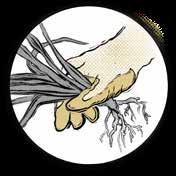

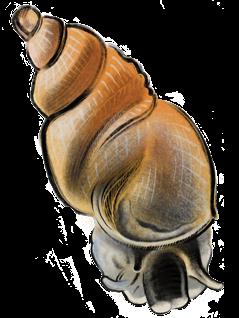

We have introduced all sorts of problematic plants and pest animals over time, and we can try to stop further damage by:
●• Fencing off waterside areas so that farm animals and chemicals used on farms cause less pollution and so that banks aren’t eroded.
●• Making sure that your whānau Check, Clean, and Dry any equipment you have been using in the water. Invasive species like didymo (the goopy invasive algae shown in the picture here) can spread easily! A little bit of a plant on your paddle or some goo on your shoe cause a lot of havoc.
●• Not releasing pets into the wild, and reporting pests if you notice them. Animals like turtles and koi carp are beautiful and interesting, but they can cause severe harm if they escape into our lakes and rivers.
Not only can we help to prevent things from getting worse in our environment, we can also experience the joy of making things better! Some ideas include:
●• Planting up areas close to waterways with native species to provide habitat, food, shelter and protection for creatures on land and in the water.
●• Leaving logs, leaves and stones in the water so freshwater insects, crayfish, crabs, snails, limpets, mussels and fish have places to lay their eggs, hide from predators, take a rest or have some kai!
When we know our environment well, we can start to get a better sense of whether it is healthy or unhealthy. Since a lot of our freshwater species are nocturnal (active at night), grab a grown-up and a torch and…
●●• Explore! Ask questions, look for answers. Share what you’ve discovered with other curious creatures!
●• Use resources to learn about and identify our watery wonders. Your local bookstore will be likely to have awesome books (look for Gillian Candler, Dave Gunsen and Stella McQueen) and DOC and NIWA have fantastic online tools to get you started.
●• Be water wise out there, and kia ngahau – have fun!
We were delighted with your response to our first kids’ colouring competition alongside a new kids’ section in the last edition of Open Space. Just under 100 entries were sent in from across the country. Well done to everyone who had a go and entered your beautifully coloured Notoreas perornata day-flying moths.
Our thanks to the talented Sky Smale who designed the kids’ section and colouring page that was enjoyed by so many.
“ I had lots of fun choosing bright, sunny colours for the day-flying moths. I chose the common name ‘The Daphne Moth’ because they lay their eggs on native Daphne flowers and the purple caterpillars love eating their leaves.”
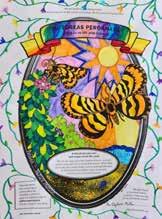




“ I think it’s fantastic to keep activities like this to engage kids. Luke has a real passion for invertebrates, especially moths, and we have plenty of them here in the Mackenzie Basin! He had a great time trying to name one (after himself lol).”
Luke’s parent, Marriane
QEII National Trust (QEII) members have the opportunity to nominate and vote for two directors to serve on the Trust’s board of directors for a three-year term, effective from 24 March 2025.
Eligibility to nominate, be nominated, and vote
Only QEII members (i.e., current covenantors, life member covenantors, financial members or an officer of a corporate member) may nominate, be nominated and vote in the elections. Eligible members may put themselves forward for consideration and do not need to provide a nominator.
Financial memberships must be current as of 23 December 2024 and not expire before 24 March 2025 to be eligible to nominate, be nominated, and vote. Please be sure to renew your membership in time if you wish to take part in the elections.
• Nominations opened on Tuesday, 10 September 2024
• Nominations close at 12 noon, Friday 20 December 2024
• Voting papers are sent out to members from Thursday 13 February 2025 inviting them to consider the candidates and elect two members to the board
• Voting closes at 12 noon, Monday 17 March 2025
• Voting results are confirmed 24 March 2025
Please keep us informed of any changes to your address and/or other contact details. Members are encouraged to update their email address if they would like to vote online.
To update your details, email info@qeii.org.nz or call on 0800 467 367.
Nomination form
Online and print versions of the nomination form can be downloaded from the QEII website qeiinationaltrust.org.nz/elections or requested by emailing iro@electionz.com or by calling the Returning Officer on 0800 666 029
Board director duties and fees
The QEII National Trust Board is a governing board. Elected directors represent the membership as a whole and not any organisation or interest group with which they may be connected. Details about the board’s role and functions are found in the Queen Elizabeth the Second National Trust Act. A copy of the Act can be found at qeiinationaltrust.org.nz/elections
Directors receive a fee of $11,000 per annum, plus reimbursement of costs relating to board business.
For information about nominations and the election process
If you have any queries regarding the nomination or election process, please email the Returning Officer at iro@electionz.com or phone 0800 666 029.
Far North rep Mieke Kapa loves using her knowledge and experience to deepen landowners’ appreciation of their covenants.
Many landowners already love their patch of bush or wetland but get a real buzz when Mieke can help them learn more about the special things in their covenants.
“If I’ve sparked them to be more excited, then I feel like I’ve done a good job,” Mieke says. “Later I might get a text saying ‘I’ve got that goat’ or ‘I’ve weeded out that area’.”
Mieke took over from Far North rep Greg Blunden, who also covered Kaipara, in March last year after moving from the Bay of Plenty to be close to her husband Henare’s family roots. She previously worked for nearly seven years for the Bay of Plenty Regional Council as a land management officer.
“That work helped develop the experiences, expertise and interest that’s really helpful in talking to landowners. I can relate to the challenges and the things that need to be done on the covenants.”
During that time with the regional council, Mieke got to know both the current Eastern Bay of Plenty rep Hōri Barsdell and his predecessor Wayne O’Keefe through work and their shared interest in botany.
“I’d been out on sites with Wayne and Hōri a couple of times and realised being a rep would be a great role to move into. The connection with
landowners looking after their spaces appealed to me and it seemed to be a really positive role.”
“Seeing the connection the passionate landowners have with their land, it’s a powerful connection, they’re actively doing something. It’s often a family decision to covenant and they like the idea of protecting that land in perpetuity.”
Mieke’s Far North patch currently has 236 covenants, varying in size from 300 ha to around a hectare and they are as varied as the Far North landscape.
There are many types of wetlands and some “stunning” forest untouched by browsing pests such as deer, goats and wallabies, which were more common in the Bay of Plenty. “The difference is quite phenomenal really compared to large areas that have many large pest animals.”
Wetlands are of particular interest to Mieke. She studied environmental science when her children were young and went on to get a Masters in botany and plant biology. As part of her Masters, she studied kuta (Eleocharis sphacelate), a rush found in swamps and on lake edges, and its use by Māori for weaving and other purposes.
An interest in nature has always been part of Mieke’s life. As a child, her Dutch immigrant parents would take
the family on holidays to Tongariro National Park where they would walk a different track each day.
Another light bulb moment came with a trip around Lake Waikaremoana with a group of other women when her children were small. “On that trip I realised I wanted to do something that meant I could walk or work in the bush and learn about the bush,” she says.
Mieke loves the chance through her work to visit different types of coastal and inland wetlands, including kahikatea stands and kauri forest. “The kauri forest is very different habitat from what I knew in the Bay of Plenty. On ridge lines I’ve been finding lovely orchids and other plants I didn’t see in the Bay.”
In their spare time, Mieke and her husband are enjoying ticking off their bucket list of special places to visit in Northland and anticipating moving into a house they are having built on their block of land.
“I’m looking forward to being able to work in my own little space again and building my little veggie garden,” Mieke says.
“ Seeing the connection the passionate landowners have with their land, it’s a powerful connection.”

LEFT
to
QEII land
“ If I’ve sparked them to be more excited, then I feel like I’ve done a good job.”
BELOW
Mieke Kapa hanging out with a tutukiwi/ greenhood orchid
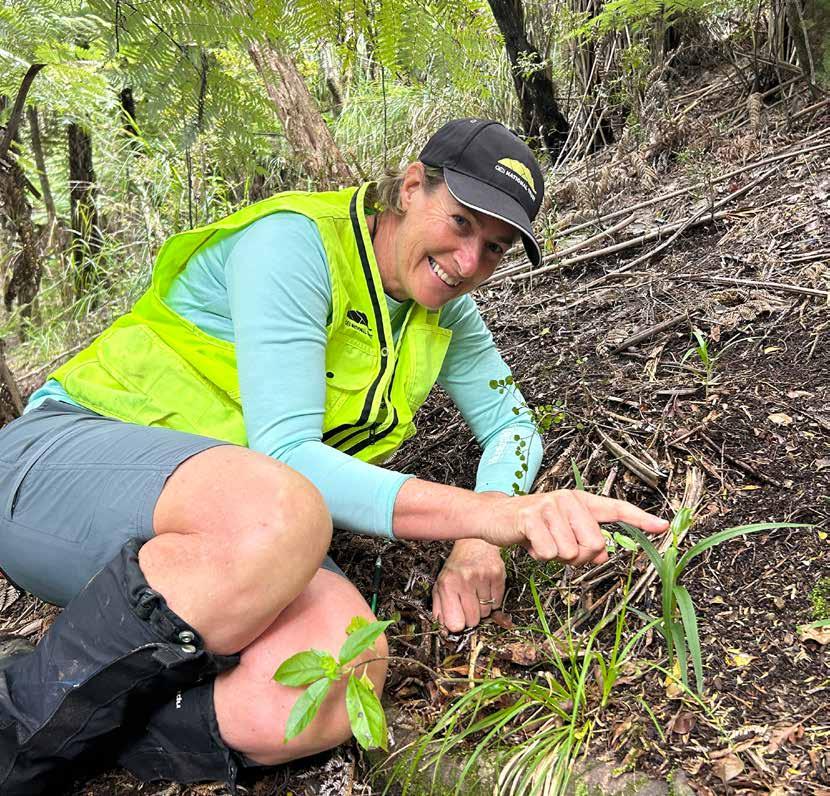
James Guild, who sadly passed away in September 2024, was a dedicated covenantor and a great champion of QEII, serving nine years as Chair of the QEII board. His intelligence, thoughtfulness and quiet leadership was hugely influential in QEII’s work.
His family property, High Peak Station in Canterbury, has four QEII covenants and was a source of great pride for James. He and his family’s commitment to farming and the environment was recently recognised at the Ballance Farm Environment Awards, with High Peak Station taking out the supreme award for 2024.
his microbiology lecturer from his days at Lincoln. Ian approached James proposing an open space covenant to protect the braided river system of the Upper Selwyn River that ran through High Peak Station, and ten years on, the first QEII open space covenant was registered on the Station.
BELOW
James Guild at a field trip to the Mahu Whenua covenants in February 2018
James’ family bought High Peak Station in the 1970s, but a massive snow event just a few months later changed the course of the family’s plans and they chose to take on debt and focused on development to get them out of trouble. Along the way, parts of the farm that were steep or impractical were set aside, leaving remnants intact.
The QEII rep at the time – Ian ‘Trotsky’ Blair – already had a connection with James as
Recently retired QEII rep for Canterbury, Miles Giller, remembers the way that James always kept conservation in mind on the farm. “He was always looking for opportunities for a win-win for farming and biodiversity,” says Miles. “The first time I went up there, there were a few elderberries near the middle of a big dense patch of matagouri. When I said to him ‘we’ll need to do something about those’ I wasn’t expecting him to do anything himself, and then he got back to me a couple of weeks later saying he’d done it!”


James was always very hospitable during Miles’ visits to the High Peak Station covenants. “There was always a bed up there in the shearer’s quarters, and he’d always come across and have a chat with me about what’s going on. He was always very interested in things, always welcoming,” says Miles.
After experience in leadership on the Deer Farmers’ Association board and other small conservation focused bodies, James was shoulder-tapped by the outgoing QEII chair and others to put in a nomination for the QEII National Trust board.
James was announced as the Chair of QEII National Trust board of directors in 2011 and quickly got to work, with a focus on improving the relationships within the organisation.
QEII rep Robbie Bennet believes QEII National Trust flourished during James’s time on the board. “I was always impressed by his ability to stand up and speak on behalf of the Trust. He could make you feel proud to be a representative of the organisation. I was especially taken by his ability to acknowledge the QEII staff present, by name, when he’d barely met some of them.”
Christchurch
Paul Goldsmith, QEII rep for South and West Auckland, remembers when James joined the reps at the local pub one night, took the microphone and sang a great rendition of The House of the Rising Sun. “It set the tone that here was a board chair who was not in an ivory tower and was pretty down to earth,” says Paul.
During his tenure as Chair, QEII registered 1,083 covenants totalling an astounding 81,327 ha. He oversaw QEII’s progression toward modern
FROM TOP
James Guild with Edward Ellison, former Minister of Conservation Hon Eugenie Sage, Russell Hamilton from Soho Property, former QEII CE Mike Jebson and QEII Central Otago rep Rob Wardle at the Mahu Whenua covenants.
James gets his boots cleaned to protect kauri by previous QEII chair and board member Bruce Wills
James Guild and family at the BFEA field day
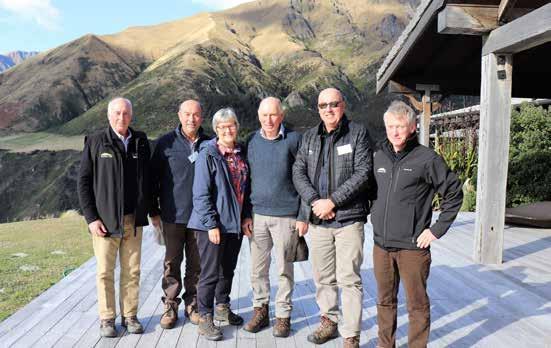



governance and management systems, a new strategic direction, raised profile and improved coordination with QEII’s allied organisations, without losing the intimacy of QEII’s board/ covenantor interface and relationships.
Highlights of his time chairing the board included the 40th anniversary celebration of QEII at Government House, the 4,000th covenant milestone in Waikato, the establishment of the Mahu Whenua covenants, and he even hosted the Duke and Duchess of Sussex at a QEII event in Auckland.
James retained an enduring relationship with QEII National Trust that stretched much further than his time as Chair. Current CE Dan Coup felt privileged to spend time with James before he passed away. “I was humbled to be able to thank him for his commitment and passion for farming, QEII and conservation,”
says Dan. “It was very special to talk with him about his thoughts on biodiversity protection and the future of agriculture, and to share memories of his time working on the QEII National Trust board.”
James was presented a pretty daunting task – being dropped completely cold into the large boots of Sir Brian Lochore – but he took on the various challenges with poise and determination and turned out to be one of QEII’s most influential leaders,” says Dan.
James certainly left his mark on QEII National Trust and influenced much of the way QEII operates to this day. He also leaves behind an award-winning legacy in High Peak Station and the unique landscapes he strove to protect with open space covenants. He will be remembered warmly by all of us at QEII who were fortunate to have known him.

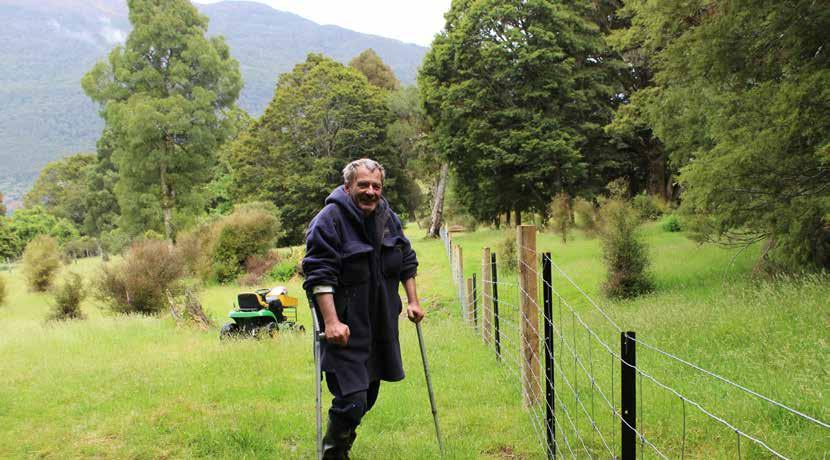
For Gary Charteris, the 20-yearold QEII covenant that protects his property in Makarora located between Wānaka and the Haast Pass, brings him much enjoyment and he is a champion for its continued protection.
“I’ve had a lot of fun in [the property, now a covenant] over the past 40 years,” says Gary. “One of my main motivations for creating the covenant at the time, about 20 years ago, was I didn’t want property developers to move in and cut the land up into little sections with houses on them and I wanted to make sure the bush was protected from that in perpetuity.”
Gary’s property runs from the foot of the McKerrow Range where it overlaps with a Reserves Act covenant, which buffers Mount Aspiring National Park. Thanks to long-term possum trapping on the covenant, scarlet mistletoe (Peraxilla colensoi, At Risk – Declining) is absolutely thriving on its host, silver beech. A few plants of the red mistletoe (Peraxilla tetrapetala, At Risk – Declining) are also doing well although mountain beech, one of its primary hosts, is absent. But it’s not
Recognising some of our dedicated QEII covenantors who care deeply about their land and are passionate about making sure their covenants thrive, in their lifetimes and beyond.
just the flora benefitting from the covenant – kākāriki/yellow-crowned parakeet and kākā have become regular visitors, and pekapeka/bats have been found on the property.
QEII has been able to assist with the covenant’s protection and enhancement through The Stephenson Fund grants for fencing and pest control.
“I’ve been trapping possums for 40 years,” says Gary. “But Aspiring Biodiversity Trust are doing much of the stoat and possum control now –I’m still doing possum control but I’m finding it harder to get around.”
Gary suffered a spinal injury at about 18 years old, with uncertainty on whether he would walk again. “I proved them wrong, but now that I’m in my sixties, things are stopping working,” Gary says.
Ever resourceful, Gary has a knack for turning old ride-on lawnmowers into customised mobility scooters. “I’ve got about four at the moment and I’m about to finish another one,” says Gary. “I like to have extra in case someone
wants to jump on one to come along with me or a spare if one breaks down. I can keep my pruners and loppers with me, just to have the gear right there in case I see a wilding plant.”
A recently completed walking track through his covenant has also meant greater access to his covenant for himself and soon the public as well.
“I’ve had reasonably major mobility issues,” says Gary. “Having the track there means I can putt around in the covenant on my mobility scooter.”
The track has been funded and built by Upper Clutha Tracks Trust, aiming to provide an accessible walk for the public through the covenant and the adjoining National Park. While most QEII covenants are not open to public access, sharing the experience of being in this beautiful forest is important to Gary. “I’ve had 40 years of enjoyment of this land, and I thought it would only be right to share that with people,” says Gary.
Rob Wardle, regional representative for the Central Otago region, loves visiting Gary’s and an adjoining covenant. In a region that is largely dry or alpine in nature, it’s a fantastic contrast to visit rain forest. “Walking amongst majestic silver beech, mataī and miro, I have to remind myself that I’m only 130 km away from my home in semi-arid Alexandra”.
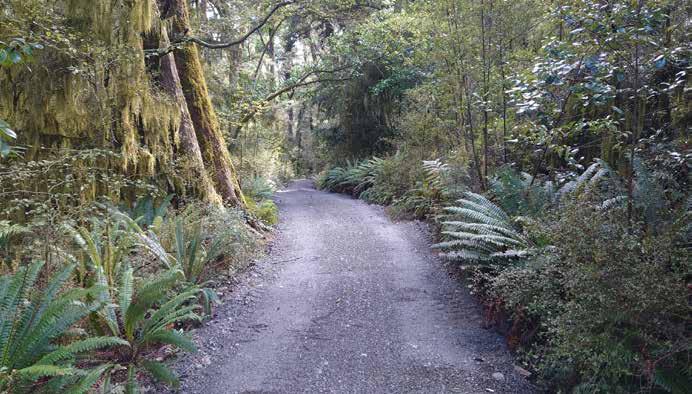
“Having the track there means I can putt around in the covenant on my mobility scooter.”

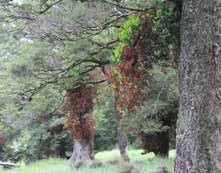
For more information on which covenants allow for public access go to www.qeiinationaltrust.org.nz/ places-to-visit
PREVIOUS PAGE
Recently completed fence with help from The Stephenson Fund FROM TOP
Recently completed public walking track Scarlet mistletoe or korukoru (Peraxilla colensoi) on silver beech –ranked ‘At Risk – Declining’
Whole of title covenant protects farmland adjoining forest from intensive development or sub-division

“ I’ve had 40 years of enjoyment of this covenant, and I thought it would only be right to share that with people.”
District Council Location
Whangarei Waipu
Ruapehu Raurimu Village
Covenant Name Area (ha) Main open space type
Matthews Covenant 2.54
Purnell Bush 1.69
Far North Henderson Bay Ōtaipango Marshall Covenant 3.70
South Wairarapa Haunui
Stu's Patch 12.97
Whangarei Whananaki South Jack and Ngaire
Rathe' Memorial The Never Nevers 123.82
Lowland modified secondary reedland, rushland and revegetated shrubland
Lowland modified primary treeland and exotic grassland
Coastal modified secondary shrubland (gumland)
Lowland modified primary forest, sedgeland and limestone cliffs with lowland exotic grassland.
Lowland modified secondary forest
Clutha Puerua
Southland Te Anau
Alan and Pat Green Sanctuary 1.24
Bog Pine Wetlands 2.14
Lowland modified primary (podocarp) forest and secondary (tōtara) treeland
Lowland modified primary shrubland, wetland and exotic grassland.
Marlborough Ōkiwi Bay Ōkiwi Bay Backdrop Covenant 99.75 Semi coastal primary forest
Marlborough Ōkiwi Bay Ōkiwi Bay Maire Tawake Covenant 0.48
Semicoastal secondary wetland and forest
Marlborough Ōkiwi Bay Ōkiwi Bay Maire Tawake Covenant 0.25 Semicoastal secondary wetland and forest
Marlborough Ōkiwi Bay Ōkiwi Bay Backdrop Covenant 24.77 Semi coastal primary forest
Marlborough Ōkiwi Bay Ōkiwi Bay Backdrop Covenant 163.30 Semi coastal primary forest
Whangarei Taurikura Ridge Prince Pike Second Covenant 35.56 Coastal modified secondary forest, shrubland and grassland
Clutha Lawrence Waipori Tussockland 617.43 Subalpine modified primary shrubland, tussockland, mossfield, rockland and exotic grassland
Ruapehu Raetihi MacLeans 9.71
Lowland modified primary forest, secondary shrubland and exotic grassland
Ruapehu Raetihi MacLeans 2.36 Lowland secondary scrubland and exotic grassland
Southland Niagara Bashford Trust 4.36 Lowland secondary forest
South Taranaki Te Kiri
NRGE Orchid Haven Swamp Forest 11.86 Montane modified primary (swamp) forest
Far North Honeymoon Valley 24.02
South Taranaki Ōpunake Neilson Bush 23.17
New Plymouth Urenui Hickman Road 2023 1.60
Christchurch Wainui
McMillan's Bush 11.07
Lowland secondary forest, modified secondary forest and reedland
Lowland modified secondary forest and stream
Semicoastal modified primary forest and secondary scrub
Lowland modified primary forest, secondary kanuka forest and vineland and stream
District Council Location
Covenant Name
Area (ha) Main open space type
Christchurch Akaroa, Banks Peninsula Helps Forks Ccovenant 3.52
New Plymouth Onaero Hickman Road 2022 4.94
Clutha Waipahi Waipahi Wetland 9.06
Hastings Whirinaki Pakuratahi Bush 65.51
Southland Waimahaka, Tokanui Somerville Family Covenant 3.11
New Plymouth Kaimata Mānui Covenant 3.55
South Taranaki Rawhitiroa Twin Giants 0.52
Waikato Whatawhata Aorere Glen 3 1.55
Clutha Papatowai Village Findlaters Covenant 0.10
Dunedin Ocean View 1.90
Clutha Papatowai Village Findlaters Covenant 1.45
Waikato Whatawhata Aorere Glen 2 1.87
Hurunui Waiau Doone Kahikatea Covenant 1.55
Whangarei Glenbervie JEM's Native Forest 2.06
Ruapehu Taumaranui Meringa Riparians Covenant 7.17
Semi-coastal modified primary treeland, rushland and rockland and secondary treeland, forest and grassland
Semicoastal modified primary forest, secondary scrub and modified secondary sedgeland
Lowland modified secondary wetland, sedgeland, open water and exotic grassland
Semicoastal modified primary forest and wetland, and modified secondary forest and grassland
Lowland modified primary forest and treeland
Lowland modified primary forest
Lowland modified primary forest
Lowland primary modified forest and exotic grassland
Coastal modified primary, secondary, modified secondary forest and revegetated scrub
Coastal modified secondary treeland and revegetated shrubland
Coastal modified primary, secondary, modified secondary forest and revegetated scrub
Lowland primary modified forest and exotic grassland
Submontane modified primary forest, modified secondary scrub, forest and treeland
Lowland volcanic podocarp/ broadleaf forest
Lowland modified primary and secondary podocarp-hardwood forest, riparian
Whangarei Glenbervie JEM's Native Forest 0.97 Volcanic broadleaf remnant
Hurunui Scargill Valley H F V Murray Covenant 2.22
Western Bay of Plenty Katikati 103.50
Far North Kaikohe Mangatoa Bush 24.04
Auckland Waiuku Marikōura 4.83
Modified-secondary sedge wetland, shrubland, treeland, and tussockgrassland
Semicoastal secondary forest and modified secondary treeland and scrub and landscape protection
Lowland modified primary and secondary forest
Semi coastal modified primary, modified secondary forest and sedgeland and exotic grassland
District Council Location
Covenant Name Area (ha) Main open space type
Kāpiti Coast Te Horo 10.71
Gisborne Tahunga
Gisborne Tahunga
Southland Te Anau
Southland Te Anau
Karuai Stream CovenantWharekopaeOmoeroa 4.57
Omoeroa Covenant 32.72
Coastal modified primary flaxland, secondary scrub, artificially created open water and exotic grassland
Lowland secondary forest, scrub and exotic grassland
Lowland secondary forest, scrub, grassland and reedland, and exotic grassland/pasture
Duncraigen Shrublands 2.44 Sub montane modified primary shrubland.
Eweburn - Pyramid Extension 32.82 Sub montane modified primary shrubland, tussockland and wetland
Southland Te Anau Dismal Swamp 139.23 Sub-montane modified primary Wetland, treeland, and Spring system. A modified secondary shrubland, sedgeland and exotic grassland.
Southland Te Anau
Eweburn Wetland Extension 2.78
Modified Primary sub montane wetland / shrubland
Southland Te Anau Tibbles Extension 2 21.04 Submontane modified primary shrubland.
Southland Te Anau Ten Mile Wetland Extension 37.42 Submontane modified primary shrubland and treeland.
Tasman Collingwood Tukurua Sanctuary 2.81
Tasman Collingwood 1.97
Horowhenua Waikawa Beach Lake Huritini Covenant 12.95
Semi coastal modified primary and secondary forest.
Semi coastal secondary forest
Coastal modified primary reedland and open water.


Mieke Kapa FAR NORTH 027 494 0733 mkapa@qeii.org.nz
Trina Upperton KAIPARA 021 0822 9802 tupperton@qeii.org.nz
Nan Pullman WHANGĀREI 09 434 3457 npullman@qeii.org.nz
Chris Floyd NORTH AUCKLAND 021 066 2165 cfloyd@qeii.org.nz
Jessica Reaburn NORTH-WEST & EAST AUCKLAND 021 026 23436 jreaburn@qeii.org.nz
Paul Goldsmith SOUTH & WEST AUCKLAND 021 622 368 pgoldsmith@qeii.org.nz
Robbie Bennett WAIKATO 021 1742 761 rbennett@qeii.org.nz
Jason Roxburgh HAURAKI-COROMANDEL 07 868 2401 jroxburgh@qeii.org.nz
Zipporah Ploeg TAUPŌ & CENTRAL WAIKATO 020 4095 2800 zploeg@qeii.org.nz
Melissa Sinton WAITOMO, NORTH TARANAKI & RUAPEHU 027 867 6407 msinton@qeii.org.nz
Paul Kayes WESTERN BAY OF PLENTY 027 457 2395 pkayes@qeii.org.nz
Hōri Barsdell EASTERN BAY OF PLENTY 027 634 8958 hbarsdell@qeii.org.nz
Carol Burgess NEW PLYMOUTH 021 932 555 cburgess@qeii.org.nz
Jake Goonan SOUTH TARANAKI 022 327 0445 jgoonan@qeii.org.nz
Malcolm Rutherford GISBORNE 022 310 6818 mrutherford@qeii.org.nz
Troy Duncan HAWKE’S BAY 021 629 426 tduncan@qeii.org.nz
Lou Hagger TARARUA 022 477 3833 lhagger@qeii.org.nz
Laurie Whitehead MANAWATŪ-WHANGANUI 021 022 59259 lwhitehead@qeii.org.nz
Trevor Thompson WAIRARAPA 027 333 3243 tthompson@qeii.org.nz
Rob Cross WELLINGON – KĀPITI 0210 238 5619 rcross@qeii.org.nz
Tom Stein NELSON – TASMAN & MARLBOROUGH 0274 453 890 tstein@qeii.org.nz
Clare Moore NELSON – TASMAN & MARLBOROUGH 021 656 035 cmoore@qeii.org.nz
Martin Abel WEST COAST 03 753 3012 mabel@qeii.org.nz
James Kilgour NORTH CANTERBURY 027 474 9327 jkilgour@qeii.org.nz
Alice Shanks CENTRAL CANTERBURY 03 337 1256 ashanks@qeii.org.nz
Rob Smith SOUTH CANTERBURY 03 689 7735 rsmith@qeii.org.nz
Cathy Rufaut COASTAL OTAGO - NORTH 021 100 8347 crufaut@qeii.org.nz
Morgan Trotter COASTAL OTAGO - SOUTH 027 222 3067 mtrotter@qeii.org.nz
Rob Wardle CENTRAL OTAGO 0204 012 6483 rwardle@qeii.org.nz
Mark Sutton WAIAU CATCHMENT 021 540 814 msutton@qeii.org.nz
Jesse Bythell SOUTHLAND 0204 003 2109 jbythell@qeii.org.nz
